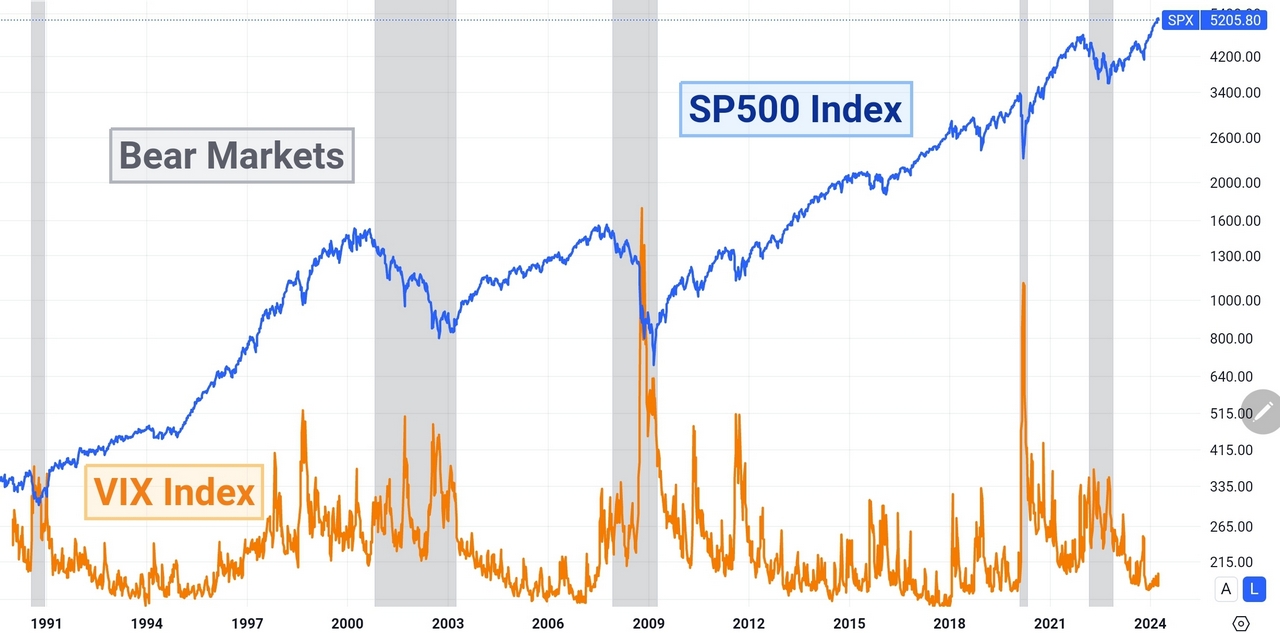In the world of finance, the terms “bull” and “bear” are used to describe market conditions. A bull market is characterized by rising prices and investor optimism, while a bear market sees declining prices and pessimism. Riding the waves of a bull market can be exhilarating, but it also requires a keen understanding of its dynamics, risks, and strategies for success.
Definition of a Bull Market
A bull market is when investment prices are on the rise. This typically applies to the stock market but can also be used for other assets like real estate, commodities, or even cryptocurrency. There’s no strict definition for how much prices need to rise to be considered a bull market, but a common benchmark is a 20% increase from a recent low.
Bull markets are fueled by investor optimism and confidence in the future. When people believe that asset prices will continue to go up, they’re more likely to buy, which drives prices even higher. Bull markets can last for months or even years, and they’re often associated with strong economic growth.
While bull markets are synonymous with growth and opportunity, they are not without their challenges, including the risk of overvaluation and market volatility.
Bull Market vs Bear Market
The opposite of a bull market is a bear market, where investor pessimism takes hold and prices trend downward. The onset of a bear market can be triggered by various factors, ranging from economic recessions and geopolitical tensions to fundamental shifts in market dynamics. During these challenging times, fear and pessimism grip the market, prompting investors to sell off assets in a bid to minimize losses. The resulting downward pressure on prices exacerbates the situation, creating a self-perpetuating cycle of selling and further declines.
Navigating the transition between bull and bear markets requires a nuanced understanding of market dynamics and a proactive approach to risk management. While the exuberance of a bull market can be intoxicating, prudent investors remain vigilant, recognizing the inherent risks and potential pitfalls. Similarly, during bear markets, maintaining a calm and rational demeanor is paramount, as knee-jerk reactions and emotional decision-making can exacerbate losses.
Moreover, investors should recognize that market cycles are inevitable and play a crucial role in shaping long-term investment outcomes. While bull markets are synonymous with growth and opportunity, they are not without their challenges, including the risk of overvaluation and market volatility. Conversely, bear markets, while often accompanied by pain and uncertainty, also present unique opportunities for value-oriented investors to acquire assets at discounted prices. By recognizing the distinct characteristics of each market condition and implementing prudent investment strategies, investors can position themselves to thrive in both periods of optimism and adversity. Ultimately, success in investing lies not in predicting market movements with absolute certainty but in adapting to changing conditions and maintaining a disciplined approach to wealth management.

Free Backtesting Spreadsheet
Early Signs of The Transition
The relationship between bull and bear markets is cyclical, with one often paving the way for the other. This cyclical nature of market cycles is a fundamental characteristic of financial markets and has been observed throughout history. As a bull market matures, signs of excess may emerge, such as speculative bubbles, overvaluation of assets, or unsustainable levels of leverage. These warning signals can serve as precursors to a reversal in market sentiment and the onset of a bear market. Once investor confidence begins to wane and selling pressure intensifies, the market enters a phase of declining prices and heightened uncertainty.
Conversely, bear markets, while often associated with fear and pessimism, also sow the seeds for future growth and resurgence. As prices reach levels that are perceived to be undervalued, value-oriented investors may begin to see opportunities for long-term investment. This gradual accumulation of assets at discounted prices sets the stage for the eventual reversal of market sentiment and the emergence of a new bull market.
The transition from bull to bear market, and vice versa, is rarely smooth or predictable. Market cycles are influenced by a multitude of factors, including economic conditions, geopolitical events, monetary policy, and investor sentiment. As a result, the timing and duration of market cycles can vary widely, making it challenging for investors to accurately anticipate shifts in market direction.
Stimulative monetary policy may provide support for asset prices and signal a potential transition to a bull market.
Technical Indicators for Early Identification of Bull Markets
There are several indicators that investors and analysts use to identify potential transitions from a bear market to a bull market. While no single indicator can predict market movements with certainty, a combination of indicators can provide valuable insights into shifts in market sentiment and direction. Some of the key indicators used to identify transitions from bear to bull markets include:
- Moving Averages: Moving averages (EMA, SMA) are commonly used technical indicators that smooth out price data over a specified period, providing a clearer picture of the underlying trend. When shorter-term moving averages cross above longer-term moving averages, it can signal a potential shift from a bearish to a bullish trend.
- Market Breadth: Market breadth refers to the number of stocks advancing versus declining in the market. A broad-based advance, where a majority of stocks are participating in the rally, can indicate improving market sentiment and the potential for a transition to a bull market.
- Volume Analysis: Volume analysis involves analyzing trading volume to gauge the strength of market moves. Increasing volume on up days and decreasing volume on down days may suggest growing investor interest and confidence, signaling a potential transition to a bull market.
- Breakouts and Trend Reversal Patterns: Technical chart patterns, such as bullish reversal patterns like double bottoms or inverse head and shoulders formations, can signal a potential shift in market sentiment from bearish to bullish.
- Economic Indicators: Economic indicators, such as GDP growth, employment data, and consumer confidence, can provide valuable insights into the health of the economy and its impact on investor sentiment. Improving economic indicators may foreshadow a transition from a bear market to a bull market.
- Central Bank Policy: Monetary policy decisions by central banks, such as interest rate cuts or accommodative policy measures, can influence investor sentiment and market direction. Stimulative monetary policy may provide support for asset prices and signal a potential transition to a bull market.
- Sentiment Indicators: Sentiment indicators, such as investor surveys, put/call ratios, and the Volatility Index (VIX), can provide insights into investor sentiment and market psychology. Extreme levels of fear or pessimism may signal a market bottom and the potential start of a bull market.
The VIX Index and Bull Markets
One of the key indicators that investors often turn to for insights into market sentiment and potential transitions between bear and bull markets is the VIX Index. Also known as the “fear gauge,” the VIX measures the expected volatility of the stock market over the next 30 days, derived from the prices of options contracts on the S&P 500 index.

The VIX index spices is often followed by bull markets. The S&P500 index prices in logarithmic scale/TradingView
During periods of market stability and investor confidence, the VIX tends to remain low, reflecting expectations of relatively calm and predictable market conditions. Conversely, when uncertainty and fear grip the market, the VIX tends to spike higher as investors rush to purchase options as a hedge against potential losses.
In the context of transitioning from a bear to a bull market, changes in the VIX can provide valuable insights into shifting market sentiment. As a bear market approaches its nadir and investor pessimism reaches extreme levels, the VIX may spike to elevated levels, signaling heightened fear and uncertainty. This surge in volatility can serve as a contrarian indicator, suggesting that market sentiment may have become overly pessimistic and that a potential market bottom may be nearby.
Conversely, as investor sentiment begins to improve and the market transitions from a bear to a bull phase, the VIX tends to trend lower as fear subsides, and confidence returns. A sustained decline in the VIX can indicate diminishing uncertainty and increasing investor optimism, potentially foreshadowing the onset of a bull market.
While the VIX can provide valuable insights into market sentiment, it’s important to interpret its signals in conjunction with other indicators and fundamental analysis. Market transitions are complex and multifaceted, and no single indicator can provide a definitive signal of a shift from bear to bull markets.
Strategies for Bull and Bear Markets
Navigating both bull and bear markets requires distinct strategies tailored to the prevailing market conditions. Here are some key strategies that investors can employ to capitalize on opportunities and mitigate risks in both types of markets.
During a bull market, assets that have performed well may become overweighted in your portfolio, necessitating adjustments to maintain balance.
Bull Market Strategies
- Buy and Hold: In a bull market, investors can benefit from a “buy and hold” strategy, where they purchase quality assets and hold onto them for the long term. Bull markets are characterized by rising prices, making it advantageous for investors to remain invested and ride the upward momentum.
- Diversification: While market conditions may be favorable during a bull market, it’s essential for investors to maintain a diversified portfolio to spread risk across different asset classes and sectors. Diversification can help mitigate the impact of market downturns and protect against unforeseen events.
- Regular Rebalancing: Periodically rebalancing your investment portfolio can help ensure that your asset allocation remains aligned with your investment goals and risk tolerance. During a bull market, assets that have performed well may become overweighted in your portfolio, necessitating adjustments to maintain balance.
- Focus on Quality: In a bull market, there may be a temptation to chase high-risk, high-reward investments. However, it’s essential for investors to focus on quality assets with strong fundamentals and sustainable growth prospects. Quality investments are more likely to withstand market volatility and deliver consistent returns over the long term.
Bear Market Strategies
- Risk Management: During a bear market, risk management becomes paramount. Investors should review their investment portfolios and assess their exposure to risk. Consider reducing exposure to high-risk assets and increasing allocations to defensive investments, such as bonds or cash equivalents.
- Capital Preservation: In a bear market, the primary goal is often capital preservation. Focus on protecting your investment capital and minimizing losses by adopting a defensive investment strategy. This may involve reducing exposure to equities and increasing allocations to safe-haven assets with low correlation to stocks.
- Opportunistic Buying: Bear markets present unique opportunities for value-oriented investors to acquire quality assets at discounted prices. Keep a watchful eye on the market for attractive investment opportunities that may arise amid the downturn. Look for fundamentally strong companies trading at significant discounts to their intrinsic value.
- Stay Invested: While it may be tempting to sell off investments and move to the sidelines during a bear market, it’s essential to resist the urge to time the market. Historically, bear markets have been followed by bull markets, and staying invested allows investors to capture potential upside when market conditions improve.
Final Thoughts
Navigating the ebbs and flows of bull and bear markets demands vigilance, adaptability, and a clear strategy. While bull markets offer growth and opportunity, they come with risks of overvaluation and volatility. Conversely, bear markets, though challenging, present opportunities for value-oriented investors. Recognizing early signs of market transitions and employing diverse indicators can provide valuable insights. Strategies tailored to each market condition, such as quality focus in bulls and risk management in bears, are essential. Successful investing hinges on embracing uncertainty, adapting to change, and maintaining discipline. By staying informed and adhering to sound principles, investors can navigate market cycles with confidence, securing their financial success.
Share on Social Media:








